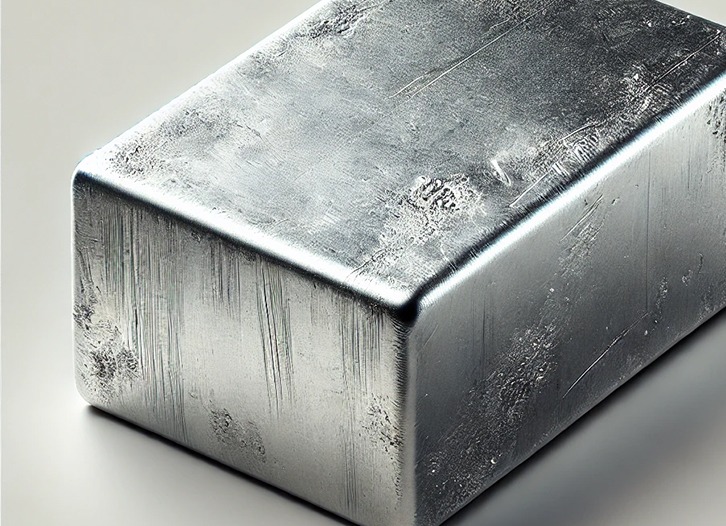The use of metal is an integral part of human development. Historical periods such as the Iron and Bronze Ages are called that because new technologies allowed people to use these metals to make tools, weapons, jewellery, and other items. Today, metals are all around us—from construction and machinery manufacturing to microscopic components in electronics and medical fields. Science is constantly searching for new ways to use the Earth’s elements more efficiently. Our team strives to extract these elements more effectively and return them to production from metal-containing waste.
All About Found Materials

Zinc
Zinc (Lat. Zincum) is a silvery-white metal characterized by workability, excellent melting properties, corrosion resistance, and a wide range of applications in the manufacturing industry. Zinc readily dissolves in acids and alkalis and is considered to be a chemically active metal. The metal melts when heated to 420°C and boils at a temperature of 907°C. Interestingly, zinc is the second most abundant metal in the human body after iron.
Zinc (chemical symbol Zn) is commonly used in the home as an anti-corrosion metal, effectively helping to protect various components of appliances from rusting. Large amounts of zinc can be found in both washing machines (up to 3 kg per unit) and refrigerators (up to 1 kg per unit). Smaller amounts of the metal can be found in modern computers and televisions. In ancient times, before zinc was identified as a separate element, its ore was used to make brass – an alloy of zinc and copper.
Today, zinc is used not only as an important component in car batteries and as an element of anti-corrosion coatings in construction, but also as a valuable component in the fields medicine, food supplements, and fertilizers.
Sources:
Get more value from your scrap metal now!
Our managers will contact you to provide professional consultation.
All you need to know about buying scrap metal
Find out about latest materials purchasing prices, conditions and news.